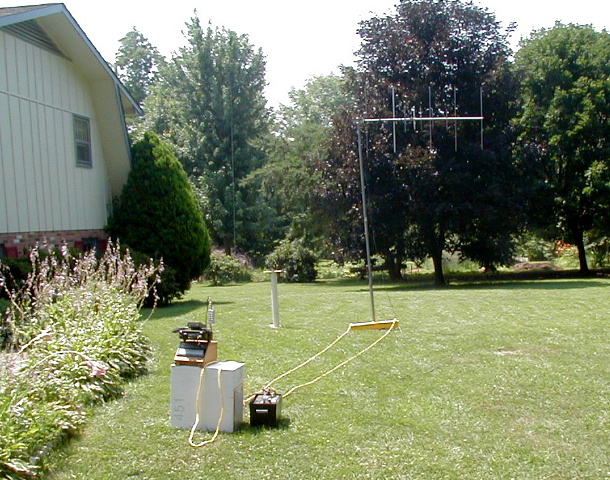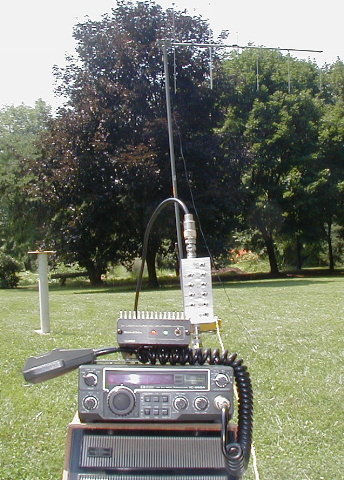
 |
You Know Where Your Antenna Is Pointing?
Well, I wasn't sure. And, I know that being off 5 degrees is worth many miles of inaccuracy. So I took advantage of the on-the-air transmitter and battery testing of the instrumentation payload by Tom Dawson, WB3AKD. These are things I did this week of July 15th to improve my direction finding accuracy.
Test Set-Up:
o I used my DeLorme 3-D Topo Quads Program to determine the bearing between WB3AKD and AI2C. 299 degrees is close at a range of 9.6 miles and no obstructions..
o I went up on the Internet and found an on-line program that would figure the current declination for this site.
o Next I wanted a clear view with no multipath, so I put the 5-element 2 and 440 yagi on a 8-foot mast. I found any lower and I'd receive two peak signals.
o Then to keep everything out of the pattern, I placed the mast on an old rotating Lazy Boy chair mount, added some weight and a rope to provide a stand off rotor control.
o I then built a metal free stand for the compass and it can be moved around to align with the antenna direction. Sighting is easy this way and repeatable.
o Also, to clear the pattern, I use about 30-feet of coax to the radio and mount the attenuator at the radio input.
Results:
o With this setup, I set the squelch control to just close at the "no-signal or clear channel noise" level then tune in the beacon and adjust the antenna for a strong signal. I then add attenuation with the attenuator unit until the squelch is just closed when the antenna is about on bearing.
o Now, I can move the antenna across the bearing and look for a single spot there the squelch just starts to open. I adjust the attenuator as necessary to further narrow the width on the pattern. I watch for multipath signals and as necessary move the antenna to eliminate them.
o I found that I can repeatedly point the antenna with +/-3 degree accuracy. No meters, no eyes, just your ears and the squelch opening every so slightly. The compass post provides a very steady, metal-free method of taking bearings and I estimate readings are within plus or minus a degree of what it should be.
o I also note that the morse signalling causes the carrier power to fluctuate and it's better to confirm the bearing during the no-code portion of the beacon signal.
o I'll be interest to see how all of this will play with the balloon and payload and antenna flopping around in flight.
Best Regards, Norm Styer - AI2C - Clarkes Gap, Virginia
 |
 |
NNNN